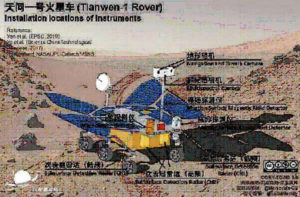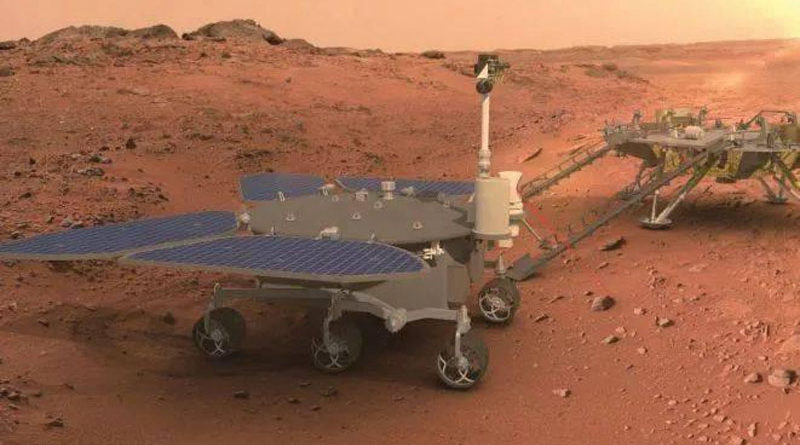China Names First Mars Rover ‘Zhurong’
Beijing (XNA) Apr 24, 2021

Zhurong, part of the ongoing Tianwen 1 mission, is scheduled to land on Mars in May or June.
Announced at the opening ceremony of 2021 China Space Conference in Nanjing, Jiangsu province, the naming is intended to represent the rover’s symbolic task to ignite the hope of China’s inter-planetary exploration, encourage humanity’s relentless adventure into the immense universe, and urge mankind to keep pursuing self-transcendence, according to the China National Space Administration.China named its first Mars rover “Zhurong”, a fire god in ancient Chinese legend, on Saturday.
The administration also said naming the rover after the ancient god of fire symbolizes the integration of modern science and traditional culture and highlights the Chinese nation’s spirit of exploration and confidence in its culture.
Zhurong, part of the ongoing Tianwen 1 mission, is scheduled to land on Mars in May or June.
If it touches down safely on the red planet and works as planned, Zhurong will be the sixth such machine deployed on Mars, following five predecessors launched by the United States.
If the semi-autonomous craft functions efficiently, it will work for at least three months and undertake comprehensive surveys of the planet.
The rover is 1.85 meters high and weighs about 240 kilograms. It has six wheels and four solar panels, and can move at 200 meters an hour on the Martian surface. It carries six scientific instruments – including a multispectral camera, ground-penetrating radar and a meteorological sensor – which will allow it to obtain information about a wide range of factors, such as the composition of the planet’s surface, the geological structure, climate and environment.
Tianwen 1, China’s first independent Mars mission, began in July when the probe of the same name lifted off from the Wenchang Space Launch Center in Hainan province.
The probe weighed more than 5 metric tons when it was launched as it was loaded with fuel, but its weight gradually decreased as the spacecraft consumed the propellants during its flight.
It traveled more than 470 million kilometers before entering Martian orbit on Feb 10, when it was 193 million km from Earth – because the two celestial bodies keep moving on their own orbits, a Mars-bound spacecraft must fly in a carefully designed, curved trajectory to catch up with the planet. Depending on the planets’ orbits, Mars is 55 to 400 million km from Earth.
On Feb 24, Tianwen 1 entered a preset parking orbit above the red planet. The spacecraft has been programmed to maintain that position for about three months to examine the selected touchdown site before releasing its landing capsule to descend through the atmosphere.
The capsule is expected to touch down in May or June, and after several days of preparations, it will place a rover on the soil.
By the time of the touchdown, Mars will be about 318 million km from Earth, according to the mission planners.
If Tianwen 1 can fulfill its objectives – orbiting the planet to make comprehensive observations, landing on the planet and deploying a rover to conduct tests – it will become the first Mars expedition to accomplish all three goals with one probe.
The most recent rover to operate on Mars was Perseverance of the US, which started operations at the Jezero Crater on Feb 19 (Beijing time).
Tianwen 1 is the world’s 46th Mars exploration mission since October 1960, when the former Soviet Union launched the first Mars-bound spacecraft. Only 19 of those missions have been successful.
Tianwen, or The Quest for Heavenly Truth, is an epic work by Qu Yuan, a renowned poet from the Chu Kingdom who lived during the Warring States Period (475-221 BC).
The China National Space Administration said naming the mission after the poem was intended to illustrate China’s determination to explore deep space and also implant a love of science in the nation’s youth.
Source: Xinhua News Agency
Courtesy: MarsDaily

